
Angkor Wat (General Photos) cover page. |
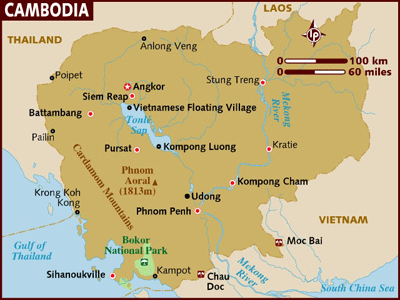
Map of Cambodia with star indicating Angkor Wat. |
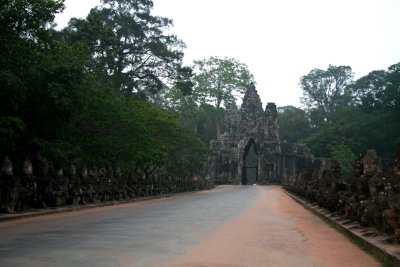
Road (at dusk) leading to the south gate of Angkor Thom, which is the 13th century capital built by King Jayavarman VII. |

The five gates of Angkor Thom citadel were designed for the passage of elephants. Now, tour buses pass through them. |
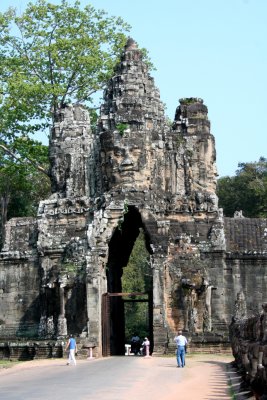
Day shot of face on the south gate is of Avalokiteshvara (the revered bodhisattva who embodies the compassion of all Buddhas). |

To the right of the south gate are 54 demon statues. |

The same demons at dusk (some of these photos were taken at dusk, and others during the day). |
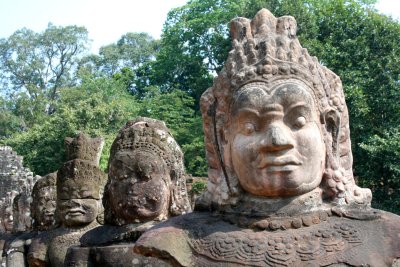
Closeup of the demons. |

A demon statue with the moat in the background. |

A similar demon statue as seen at dusk. |

More demon heads at dusk. |
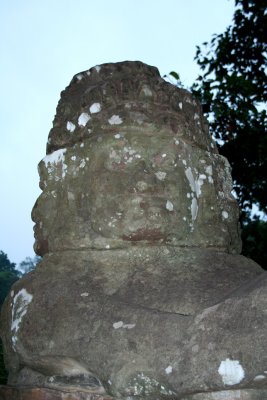
Closeup of a demon head. |
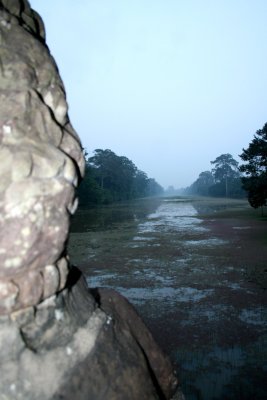
Demon head with the moat in the background at dusk. |

Another evening shot of the same statue showing some age spots and the moat behind it. |

To the right of the south gate are 54 statues of gods. It's better I am hanging out with the gods rather than the demons! |
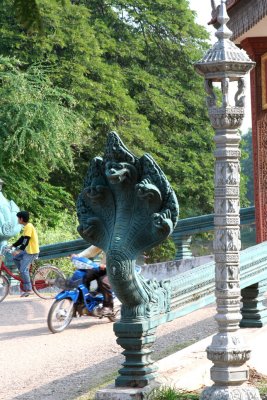
Statue of a hydra-headed snake. This was taken in Siem Reap (the main town next to Angkor Wat). |
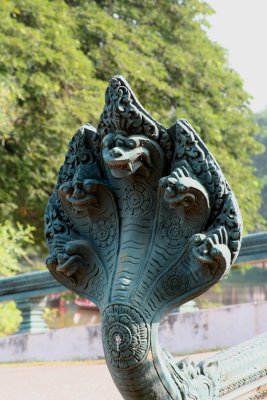
Closeup of the hydra-headed snake. My hotel was located nearby. |

Elephant drivers with elephants for hire lined up in the Angkor Thom temple complex. |
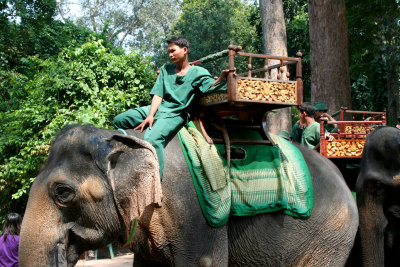
This was my elephant driver. He looked kind of bored. |
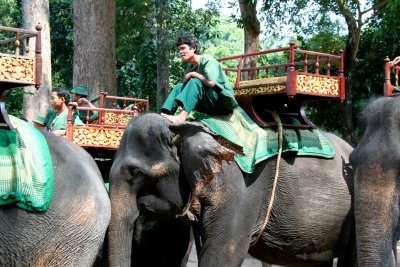
Another elephant driver with many elephants lined up. |
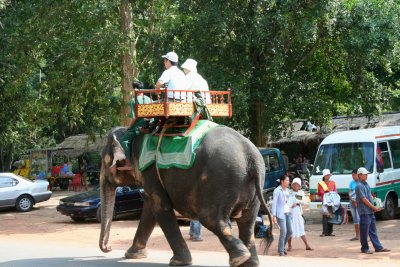
I snapped this photo of some other riders from the elephant that I rode (a difficult task since it was a bumpy ride)! |
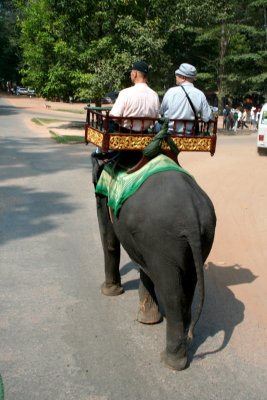
These riders were in front of my elephant. |

This elephant driver was feeding a pineapple to this elephant. |

The elephants are especially fond of bananas. |
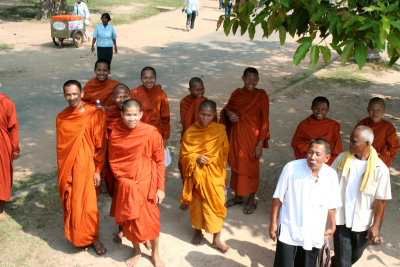
I took this picture of the monks from the elephant that I was riding. |

This little girl and her mother sold pineapples to be feed to the elephants. |
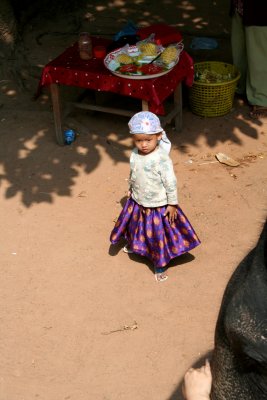
Closeup of the little girl. |
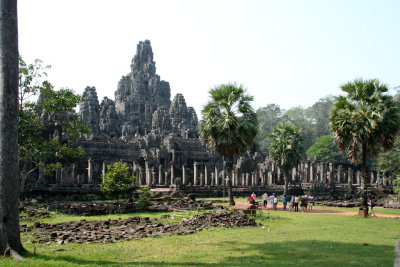
View of Bayon Temple, found inside of Angkor Thom (as seen from the top of my elephant). |
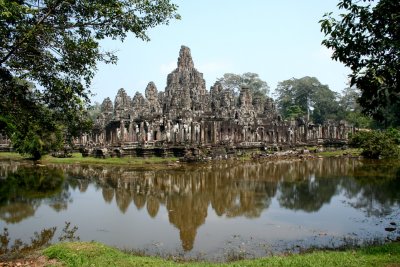
This is another side of Bayon facing a pond. |
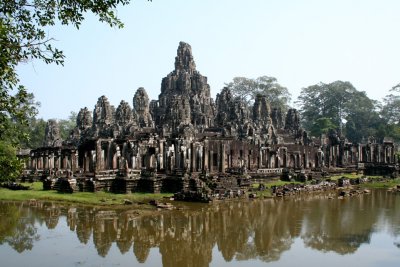
The Bayon Temple was built in the 13th century as the state temple of King Jayavarman VII. |
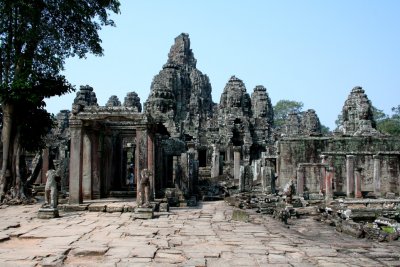
Entryway leading into the Bayon Temple (by now I was on foot, not on the elephant). |
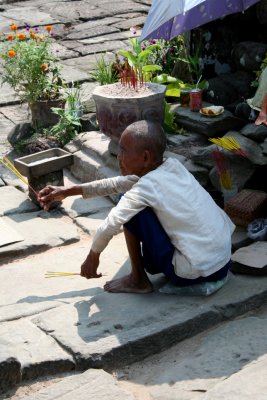
Cambodian man who was selling candles outside of the Bayon Temple. |
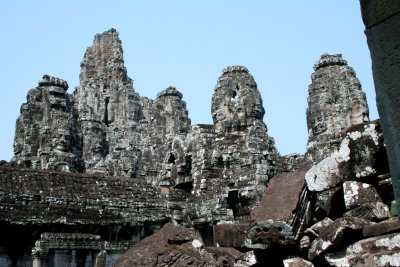
The most distinctive feature of Bayon Temple is the multitude of smiling faces on the towers (there originally were 612 faces). |

Stairs leading into the temple. Note the many wonderful faces on the towers. |
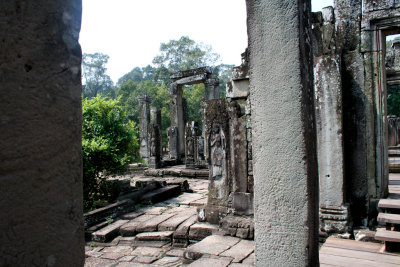
Some nooks and crannies inside Bayon Temple. |
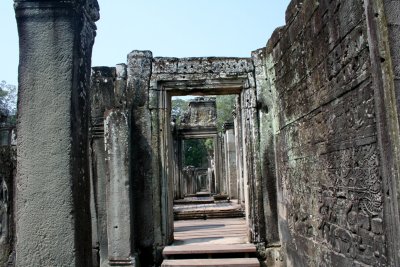
An ancient passageway inside the temple. |
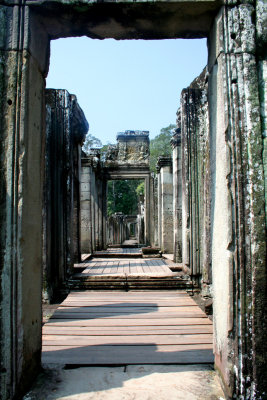
Multiple doorways inside Bayon Temple. |
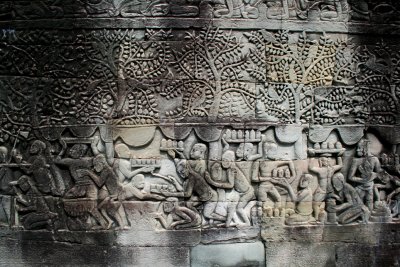
A 13th century bas-relief, most likely depicting mythological, historical or mundane events. |
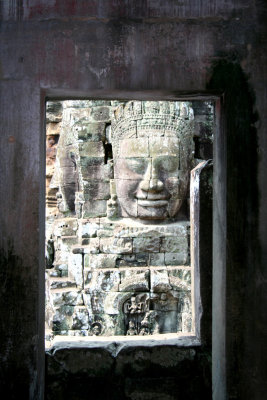
A magnificent face as seen through another doorway. |
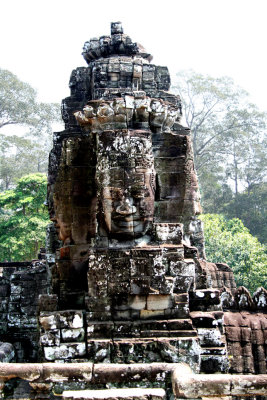
Another face carving at Bayon Temple with some age spots. |
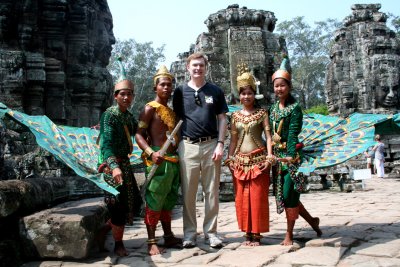
These young Cambodians in costume charged me a buck for this photo (they prefer U.S. dollars to Cambodian currency). |

A distinctive profile on the tower as seen through a doorway. |
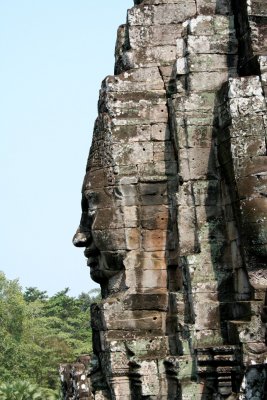
Closeup of the profile on the tower. |

There are many more heads and carvings through this doorway. |
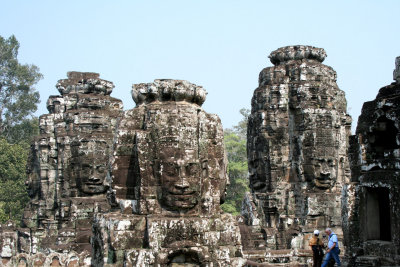
Everywhere you look in the Bayon Temple, there are more wonderful faces. |
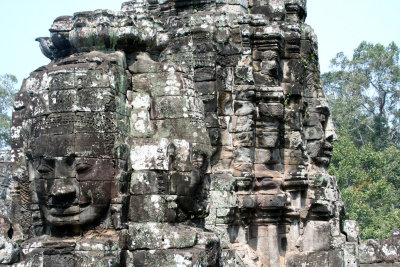
I count six faces in this photo. |
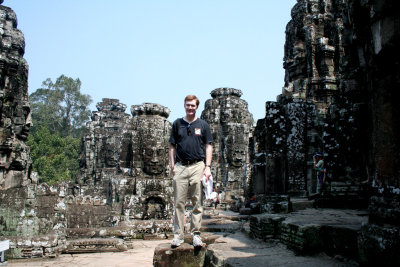
Me posing at the Bayon Temple among the ancient faces (of which, hopefully, mine is not one of them)! |
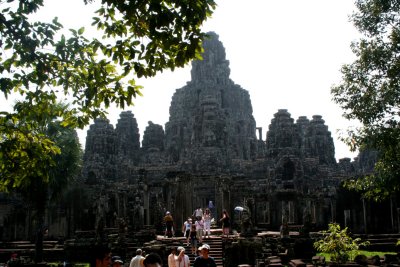
View of the Bayon Temple as I left it with my tour guide. |
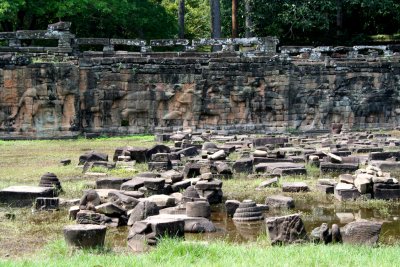
Stone ruins in front of the Elephant Terrace, a part of the walled city of Angkor Thom. |
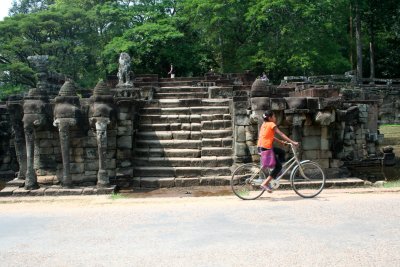
Angkor's King Jayavarman VII used the Elephant Terrace as a platform from which to view his victorious returning army. |
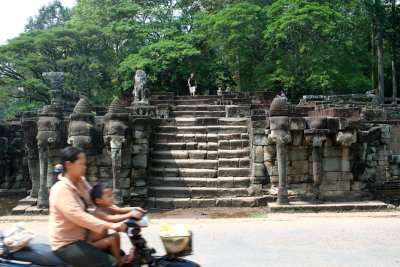
Mother and child whizzing by the Elephant Terrace on a moped (the preferred means of transportation in Angkor Wat). |

Across from the Elephant Terrace are some ancient Angkor stone buildings. |
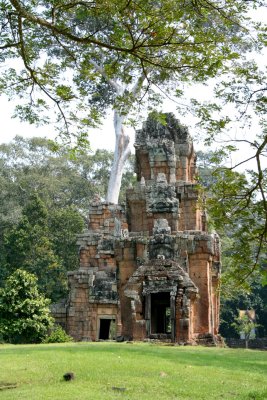
Another view of the building. |
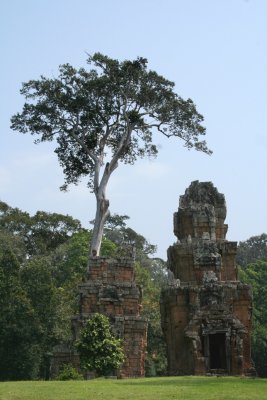
Two ancient Angkor buildings side by side. |
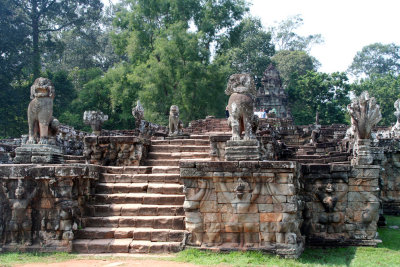
A bit further down from the Elephant Terrace is this terrace with lions on it. |

Closeup of the terrace steps. |
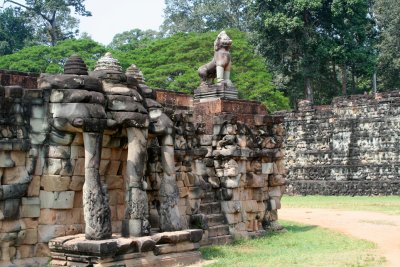
More detail of the wall and terrace. I see elephants with a lion on top. |
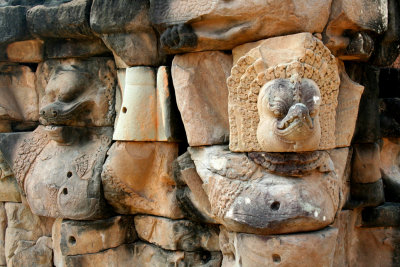
Closeup of some dog and bird like figures who's arms are holding up the wall. |
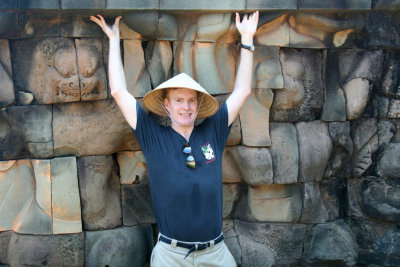
I decided to hold up the wall, too! |
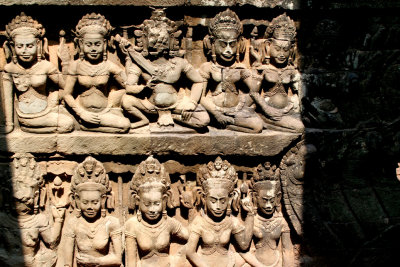
Another bas-relief of ancient figures. |

Thommanon is a temple located just east of Angkor Thom. |

What makes this temple different is that it is a Hindu temple in the Angkor Wat style. |
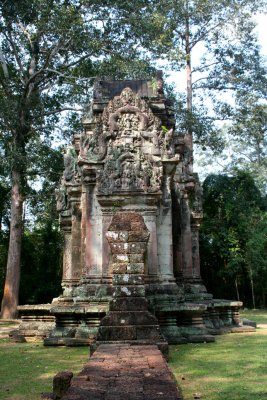
It is one of a pair of Hindu temples (the other is Chau Say Tevoda) built around the middle of the 12th century. |
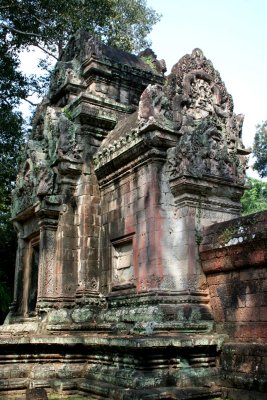
Thommanon is architecturally more advanced than its predecessors. |

The designers took advantage of the natural qualities of sandstone, rather than simply imitating it in wood. |

Sandstone carvings as seen at the top of Thommanon Temple. |

More Thommanon Temple views. |

Me posing at one end of Thommanon Temple. |
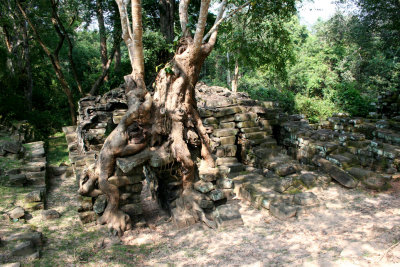
Along a road in Angkor Wat was this gnarly tree growing on some ancient ruins. |

Another tree, next to the first one, also, growing amongst the ruins. |
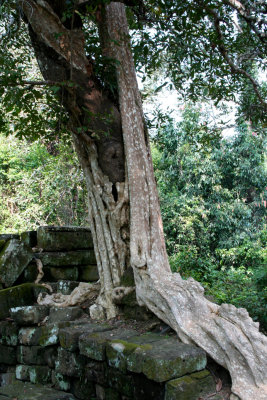
Notice how this tree seems to split down the middle. |
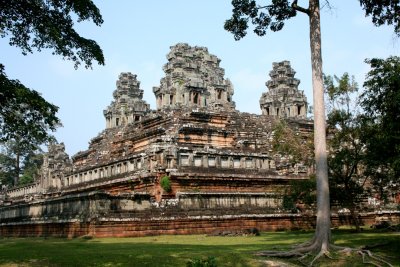
Ta Keo is an incomplete temple in the Khleang style and built as the state temple of King Jayavarman V. |

Ta Keo Temple was dedicated in 1000, but work was later abandoned, with little decoration applied. |
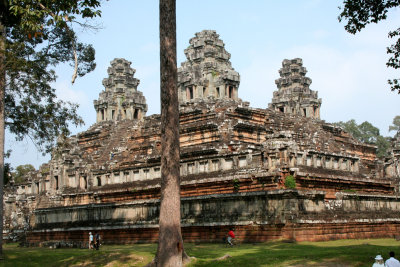
Since the temple was never finished, it is uncarved throughout, giving the walls an unintentionally severe appearance. |

View of Ta Keo Temple's west fašade. |
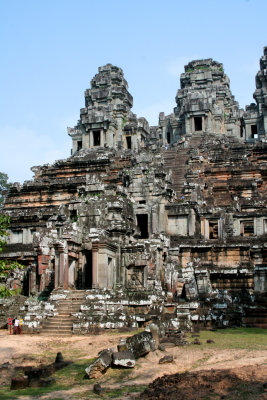
View of the temple's entrance. |

Note the three towers of Ta Keo Temple. |

Great angle of the temple looking up a hill through the trees. |
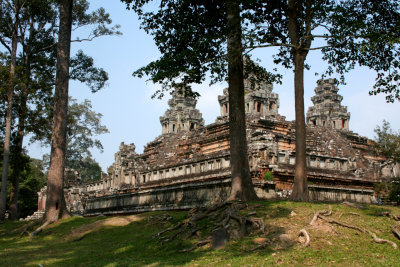
Interesting gnarly and twisted roots of the tree in front of the temple. |
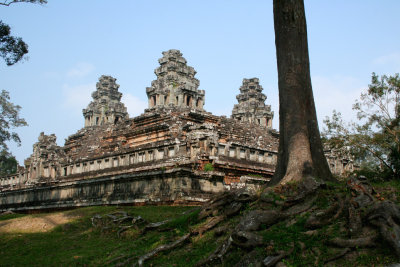
Closeup of the gnarly and twisted roots of the tree. |
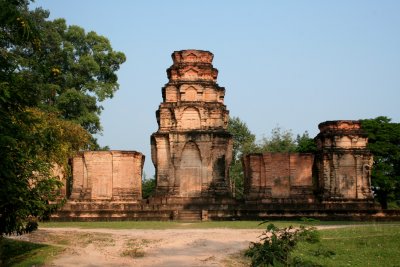
Fašade of the Hindu temple Prasat Kravan which was built in 921 AD by the nobility, not by the king (of brick and plaster). |

Central tower of the Prasat Kravan Temple. |

Me next to a dog sculpture at Prasat Kravan. |
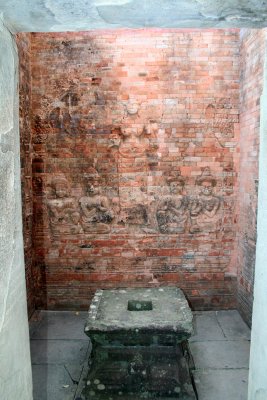
Interior wall carvings at Prasat Kravan. The temple is dedicated to the Indian god Vishnu. |
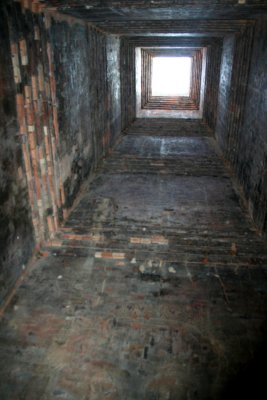
This chimney leads from the inside to the top of the temple. |
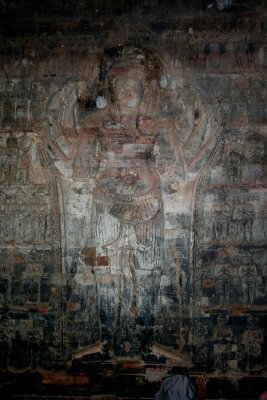
Another interior wall carving at Prasat Kravan (a Hindu goddess, perhaps). |











